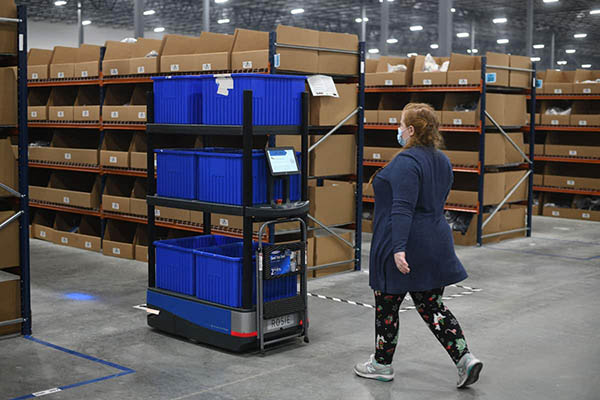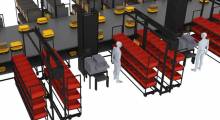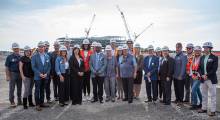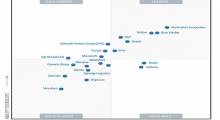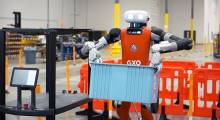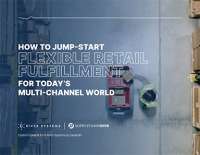Love them or hate them, comfortable footwear such as Crocs was in high demand as many people worked from home over the past year because of the COVID-19 pandemic. To deal with the spike in e-commerce demand, Crocs Retail LLC planned to move into a larger fulfillment facility. But in the meantime, it leased automation from 6 River Systems Inc. to improve throughput, reduce the effects of labor shortages, and optimize capacity.
Sedlak Supply Chain Consultants helped Broomfield, Colo.-based Crocs see the potential benefit of working with 6 River Systems (6RS) with a distribution center site visit.
“Sedlak came to us late last summer and said Crocs needed something flexible and fast for a half-million square-foot 'popup,'” recalled Fergal Glynn, vice president of marketing at 6 River Systems. “Chuck was the ideal solution. We were able to understand Crocs' volume and profile and worked with Sedlak on the building design.”
Chuck robots bridge the gap
“Before we started working with Crocs, they planned to open a new distribution center in Dayton, Ohio, but the pandemic accelerated their growth rate,” Glynn told Robotics 24/7. “The company needed something additional in place before its heavily automated building was complete.”
How common are “pop-up” facilities? “We do see an accelerating trend to get on-demand warehouse capacity,” said Glynn. “We're seeing both 3PLs [third-party logistics providers] and brands looking to figure out how to automate facilities quickly.”
What lessons did Waltham, Mass.-based 6 River Systems take away from its Crocs deployment in the middle of the pandemic?
“We learn with every deployment, and we're now at more than 100 sites,” replied Glynn. “We do see some repeatability. When we did the work with this one in particular last fall, there were still lockdowns and restrictions on travel.”
“Along with our partners, we figured out how to do deployments as safely as possible, while limiting the amount of long-distance travel by our employees,” he added. “Now, we work with third parties such as Ricoh. They have technicians certified on 6RS solutions and are closer to customers. They'll go onsite for things like mapping, maintenance, and repair.”
Crocs reports significant savings
Crocs deployed 51 Chuck autonomous mobile robots (AMRs) during off-peak periods, plus 32 more Chucks during the 2020 holiday season for a 182% pick-rate improvement. It obtained the robots through a robotics-as-a-service (RaaS) business model, helping to keep upfront costs down.
6 River noted that its Chucks, which can lead human pickers, enabled the company to reach full volume within two days of the popup facility going live. The robots reduced training time from one week to one day.
In addition, 6 River Systems' software, which was integrated with Crocs' warehouse management system, enabled optimization.
“We see everything. It's uploaded to the cloud and fed into our optimization algorithm,” said Glynn. “We're continuously monitoring activity throughout the day on where robots and people should be. Our technology allows Chuck to bring workers to whatever part of the building efficiently.”
“We noticed that once the system was live, we found other areas for optimization,” he said. “A week after we turned it on, we added dynamic zoning capability, which reduced walking by associates by an additional mile per day.”
Crocs has been pleased with the results, said Glynn. “We've helped pick 3 million units by February 2021, and since we went live in the fall of last year, more than 5 million items have been picked,” he said. “It's not just Crocs, but also Jibbitz charms, which allow for customization.”
Future fulfillment with multiple robots
“The human resources team at Crocs has started to use AMRs as a tool in its recruiting efforts,” Glynn said. “Chris Cacioppo, our chief technology officer, has done some research to quantify the amount of savings through faster training times.”
When Crocs finishes building its new order-fulfillment center, it could include Chucks and other robots from multiple vendors.
“We're still talking with Sedlak and Crocs about the new facility,” Glynn said. “I see a future with lots of different types of robots, each brought in for a specific task. Even today with existing customers, we're in the same building as a goods-to-person solution, used for the fastest movers and smaller products. Chuck is more for longer-tail, bulkier products.”
“You could start or finish an order in 6 River—an order started in a goods-to-person system goes into a container put on a Chuck, which you can top off with other items,” he added.
With heterogenous environments on the way, how does 6RS feel about interoperability standards? “This is important, and we are active in two organizations writing specifications,” said Glynn. “We're a participant in the Materials Handling Institute's Robotics Group, and Chris [Cacioppo] is working with MassRobotics and other local companies on a specification for robots to talk to one another.”
About the Author
Follow Robotics 24/7 on Linkedin
Article topics
Email Sign Up

